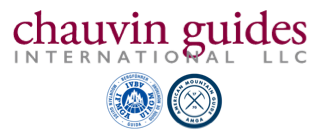If you want to make a career of guiding people into the mountains a Scope Of Practice document that allows significant access to terrain during training could put you at increased risk of injury or death in your career. How this could happen might fall under the unintended consequences of the SOP although unintended I will attempt in this post to make it a little less unconsidered.
One assumption I make is that far more people will enter into the AMGA Guide/Instructor Process than will graduate to become career guides. I believe from my anecdotal experience this has been the case in the AMGA Training Program and in guiding in general. What will affect the severity of the career guides risk is the extent to which this happens.
It makes perfect sense at first look to allow trainees to guide/instruct; low risk, low consequence terrain, and guide service curriculums. We know that well mentored and/or supervised apprenticeships under career guides are important in the training of a guide. The argument I will try to make is that making that to liberal may lead to a situation where the only work that pays a living wage (both in money and benefits) may be higher consequence work. Allowing lower paid trainees to do the less risky work means that the way for a trained guide to make a wage that is livable is likely to be weighted toward the riskier work.
Guide training in this country (USA) is relatively young but maturing. Our SOP will more deeply institutionalize the training program. In some ways this phenomenon of relegating low consequence work to lesser skilled and lower paid guides has existed for some time although there are some exceptions. High consequence work tends to be low ratio and in some areas ratio has an impact on pay, which leads younger less skilled guides to take that work. I will assume the SOP will substantially curtail that practice and in effect relegate the high consequence work to the certified guide and to some extent the assistant guide. If in doing that we create an incentive for guide services to hire trainees to do the high ratio, lower consequence work (I’m talking about consequence of the guide here primarily) we end up pushing the high consequence work to the mature guide. Along with that we create an incentive for the guide service to maximize their profit by paying low wages based on consequence since there will be a high number of guides that can do that work according to the SOP.
For younger certified guides this might not at first seem so bad. Who doesn’t want to work in the more substantial terrain with low ratios at the start or even mid-career? Since most American Guides are now in that stage of their career I fear that many of you are not considering how this will impact you, as you get older.
I hope this will spark thoughts of how your career as a guide will be affected by the SOP as written, not just today but as a future older guide. As I said this might be an unintended consequence of the SOP as written but it shouldn’t be unconsidered. If the guides today having considered this do not think the incentive to give low consequence work to lower paid guides will have an impact on their workplace risk, than the SOP as written makes sense. But if you get beyond client risk and look at the entirety of public risk including worker safety and see a problem now is going to be a much better time to address it (as difficult as it may seem) than in the future when SOP is more ingrained and accepted.
